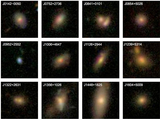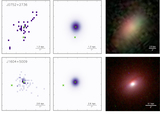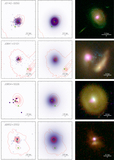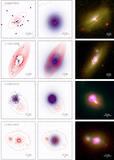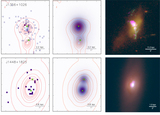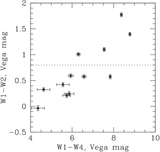Image Details
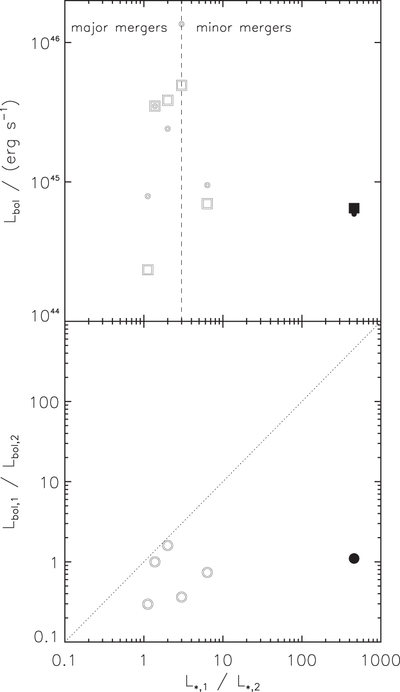
Caption: Figure 6.
Luminosities of the dual AGNs and dual/offset AGNs in comparison to the mass ratios of the galaxy mergers, measured as the ratio of the stellar bulge luminosities ﹩{L}_{*,1}/{L}_{*,2}﹩. Filled symbols illustrate the dual AGNs, while double symbols illustrate the dual/offset AGNs. Top: bolometric luminosity of each AGN, with the luminosity of the AGN in the more massive stellar bulge shown as a square and the luminosity of the AGN in the less massive stellar bulge shown as a circle. In the dual AGN system the more massive stellar bulge hosts the more luminous AGN. The dashed vertical line shows the ﹩{L}_{*,1}/{L}_{*,2}=3﹩ dividing line between major and minor mergers. Bottom: ratios of AGN bolometric luminosities for the dual AGNs and dual/offset AGNs, illustrating the relation ﹩{L}_{\mathrm{bol},1}/{L}_{\mathrm{bol},2}=({f}_{\mathrm{Edd},1}/{f}_{\mathrm{Edd},2})({L}_{*,1}/{L}_{*,2})﹩. The dotted line shows the case of ﹩{f}_{\mathrm{Edd},1}/{f}_{\mathrm{Edd},2}=1﹩, and all of the galaxies lie below this line. This demonstrates that the AGN in the less luminous stellar bulge has the higher accretion rate in all cases.
Copyright and Terms & Conditions
© 2015. The American Astronomical Society. All rights reserved.


